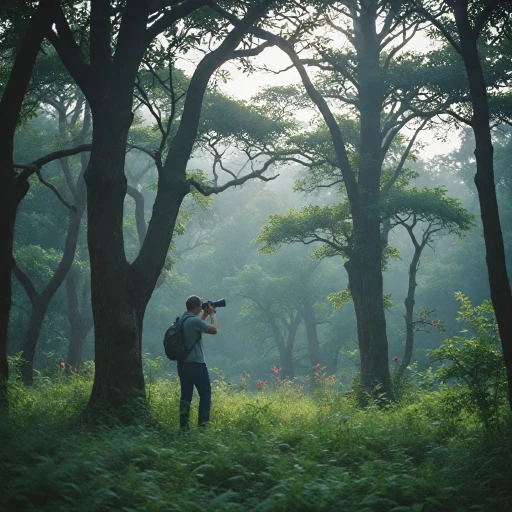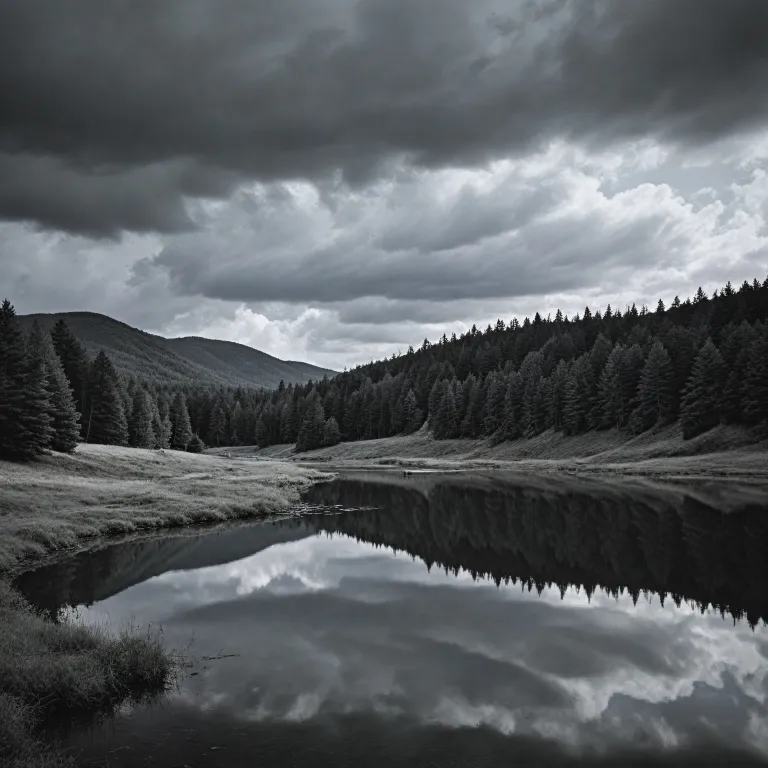Understanding Monochrome Photography
Delving Into the Essence of Monochrome Photography
The beauty of monochrome photography lies in its ability to transcend the world of colors and distill the essence of an image into shades of black, white, and gray. At its core, it’s a medium that leverages contrast, lighting, and texture to produce visually arresting images without relying solely on color as a narrative crutch. In this art form, each element is highlighted, encouraging viewers to engage with the image on a deeper level.
Monochrome photography provides an opportunity to focus on composition, forms, and the tonal variation in a scene. With digital cameras, whether you're using a Leica Monochrom or a Fujifilm with a monochrome sensor, you can capture stunning black and white images that reveal intricate details often overlooked.
Moreover, the dynamic range plays a pivotal role in monochrome photography. It allows photographers to capture subtle variations in brightness, bringing out the full spectrum of tones between black and white. Cameras with a full-frame sensor, like the some high-end models from Canon and Nikon, excel in this area and are often preferred for this genre.
By understanding monochrome photography, you enhance your ability to appreciate texture and contrast in a scene, setting the stage for exciting creative endeavors. To further explore creative techniques to capture these stunning images, you might find insights on enhancing sunset photography beneficial.
Benefits of Shooting in Black and White
Why Opt for Black and White Photography?
Choosing to shoot in black and white can transform your photography in ways that color photography might not. Here’s a closer look at the key benefits that make monochrome photography so alluring:
- Focus on Composition: When colors are absent, the emphasis naturally shifts to shapes, lines, and textures. Monochrome photography allows photographers to concentrate on the structure of the image, often producing more compelling compositions.
- Dynamic Range and Depth: Digital cameras with monochrome sensors, such as the Leica Monochrom and the Fujifilm X-series, excel in capturing a vast dynamic range, enhancing contrast and depth. This attribute highlights the subtleties in shadows and highlights, ensuring that the viewer's attention is drawn to the intricate details within the frame.
- Timeless Aesthetic: Black and white images possess a classic appeal that transcends trends. They evoke emotion and provide a sense of timelessness that color images often lack.
- Image Quality Even in Low Light: Many digital cameras, including models from Nikon and Pentax, offer improved noise performance in black white photography, resulting in cleaner images even at high ISO settings. This factor is crucial when shooting in challenging lighting conditions.
- Simplicity in Expression: By eliminating the distraction of color, black and white photography emphasizes the subject’s emotion and narrative. This simplicity can lead to more powerful storytelling through images.
- Versatility Across Genres: Whether you're a fan of street, portrait, or landscape photography, shooting in monochrome can be incredibly versatile. The adaptability enhances your creative expression, allowing you to explore different facets of photography effectively.
- Variety of Camera Options: Numerous cameras excel in shooting monochrome, from the renowned full frame Leica Monochrom to the Nikon and Pentax models with excellent autofocus and fps burst capabilities. Each has its strengths, offering photographers choices depending on their preferences and budgets.
Incorporating monochrome photography into your skill set can enhance your creative vision. For further inspiration on capturing breathtaking landscapes, consider exploring options for the
best wide lens for capturing stunning landscapes.
Choosing the Right Digital Camera for Monochrome Photography
Finding the Best Camera for Monochrome Magic
Choosing the right digital camera for monochrome photography is essential to achieving stunning black and white images. With various options available in the market, selecting the best camera can be daunting. Here's a guide to help you navigate through your options.
First, consider the type of sensor the camera has. For exceptional black and white images, a full-frame sensor is often recommended because it provides a greater dynamic range, allowing for more depths of black and whites. Cameras like the Leica Monochrom are designed specifically for this purpose, with a monochrome sensor that captures only black and white images, ensuring excellent image quality.
Autofocus capabilities and burst shooting features are also crucial, especially if you're into action photography. Cameras like the Nikon and the Pentax Mark series come with advanced autofocus systems and higher fps rates, allowing for continuous shooting, which is perfect for capturing dynamic scenes in a split second.
When it comes to brand choices, Leica, Nikon, Fujifilm, and Pentax stand out for their dedicated models that cater to monochrome photography enthusiasts.
Budget is another important factor. Prices can vary significantly depending on brand, specifications, and additional features. Review the market carefully and compare different models to find one that fits within your budget. However, remember that investing in a quality digital camera can pay off through superior image quality and longevity.
Don't forget to check user reviews and expert opinions, as they offer valuable insights into real-world camera performance. Understanding these aspects can lead you to the best black and white photography experience. For further insights, explore our detailed guide on
choosing the perfect camera tailored to your needs.
Techniques for Capturing Stunning Black and White Images
Mastering the Art of Black and White Photography
Capturing stunning black and white images involves a blend of technical skills and an artistic eye. Whether you're wielding a Leica or a Fujifilm camera, understanding how to leverage the features of your digital device is key to producing compelling monochrome shots. From the camera sensor to dynamic range manipulation, here's how you can refine your technique to get the best out of monochrome photography.
- Understand Your Camera's Settings: For digital cameras like the Nikon and Pentax Mark models, learning the intricacies of settings is crucial. The white balance, even though it’s monochrome photography, can impact the tonality of the gray scale you're aiming for. Make use of the camera's built-in monochrome mode to preview and fine-tune your shots.
- Leverage Dynamic Range: A broader dynamic range in cameras helps capture greater detail, particularly in shadowed areas and highlights, pivotal in black and white photography. Check cameras known for their extensive dynamic range, perhaps some you have read about in a detailed image review.
- Focus on Composition: Unlike colored photography, where hues and shades can convey emotion, monochrome relies heavily on composition. Think about the contrast, textures, shapes, and lines that stand out in black and white.
- Use Autofocus Wisely: Autofocus capabilities are crucial for achieving sharp images. Cameras with high FPS burst modes provide the chance to capture fleeting moments with clarity. Consider models with robust autofocus systems for continuous shooting.
- Experiment with Filters: While digital cameras come with advanced sensors that can replicate the black and white aesthetic of traditional film cameras, experimenting with filters can add depth to your images. Using a filter that heightens contrast can make your subject pop against the background.
By mastering these techniques, photographers can harness the true potential of their digital cameras, ensuring that each image captures the timeless essence of black and white photography. Whether you're using a full-frame camera or a specialized monochrome sensor, these practices will elevate your craft.
Post-Processing Tips for Black and White Photography
Enhance Your Black and White Masterpieces with Expert Post-Processing
Once you’ve captured your stunning black and white images, the post-processing stage provides a unique opportunity to further refine and elevate their quality. For those using a digital camera like the Leica Monochrom or the Nikon, you can produce remarkable details in your photos that bring your artistic vision to life.
Consider these essential tips for optimizing your monochrome work:
- Leverage Camera-Specific Software: Most camera brands, including Fujifilm and Pentax, offer dedicated software tailored for their products. Familiarize yourself with tools and features within these applications to make adjustments that retain your image's core essence.
- Play with Dynamic Range: Black and white photography depends heavily on contrast. Using software like Lightroom or Capture One, experiment with techniques to enhance shadows and highlights, ensuring your image’s full dynamic range is visible.
- Embrace Non-Destructive Editing: Utilize layers and masks to explore various effects without permanently altering the original image. This flexibility allows you to undo or adjust changes as you refine your vision.
- Fine-Tune Contrast and Sharpness: Adjusting the contrast can add depth, while sharpening enhances details that can shift focus and emotion within the frame.
- Use Presets or LUTs: If you're new to post-processing or seeking a consistent look, consider using presets or LUTs (Look-Up Tables) specifically designed for black and white photography to streamline your workflow.
By integrating these post-processing techniques, your monochrome photography won't just capture scenes in black and white, it'll hold viewers' attention, profoundly evoking emotion and storytelling through simple yet powerful imagery.
Showcasing Your Monochrome Work
Presenting Your Black and White Creations
Sharing your monochrome photography can be an enriching experience, as it allows others to see the world through its timeless elegance. For showcasing your work, consider the following tips:
- Online Portfolios: Creating an online portfolio specifically for your black and white photos is an excellent way to gather all your works neatly in one place. Websites like SmugMug, 500px, or even personal blogs can help in presenting high-quality images without compression, preserving the dynamic range you've meticulously captured with your camera.
- Social Media: Platforms like Instagram or Flickr are fantastic for reaching a wider audience. Using hashtags such as #blackandwhitephotography or #monochrome can help your work get discovered by like-minded enthusiasts. Leverage the strengths of your camera's full frame sensor and high fps burst to create and share impactful stories.
- Competitions and Exhibitions: Entering photography competitions can add significant weight to your portfolio. Not only do they provide a platform for your work, but reviews can also offer valuable feedback. Look for contests dedicated to black and white photography, sometimes even specific to camera brands like Fujifilm or Leica, which are renowned for their monochrome image quality.
- Prints and Galleries: There's nothing quite like seeing your digital images come to life as physical prints. Consider producing limited edition prints. Choosing high-quality printing papers can enhance the 'film' like feel of your digital captures, giving your work a classic touch that honors the legacy of black and white photography.
- Collaborations and Projects: Collaborating with other photographers or artists can spark new ideas and refresh your creative vision. Projects focusing on themes like 'contrast' or 'shadows' can push the boundaries of your technique and expand your horizon.
Ultimately, the best way to showcase your photography is the method that feels most authentic to you. Whether you're using a Leica Monochrom, a Nikon Mark iii, or a Pentax Mark model, the camera is merely a tool. It's your unique perspective that brings the images to life. By embracing both traditional and digital mediums, your monochrome journey can transform stunning black and white captures into compelling visual narratives.

